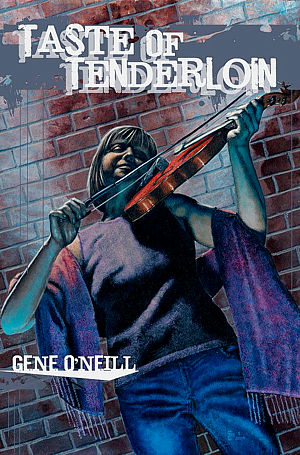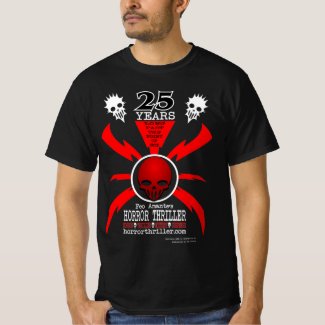 |
 |
Review by Mark Worthen |
|

by Gene O'Neill Apex Publications Trade PPB, 144 pages ISBN 0-98163900-3 |
|||
Setting. The backround. The place and time a story takes place.
And sometimes, the story depends on the setting such that it becomes a part of other elements of the story. The desert planet Arrakis became an essential element to the plot of DUNE. Ender's Game could not have happened in any other place than in Battle School. ROSE RED would not have been the same story without the eponymous living, psychotic house. It can be an adjunct part of plot or theme or even characterization.
For example, part of the success of Joss Whedon's excellent TV series FIREFLY depended not only on the interaction of the well-cast nine major characters, but also their dependence, feelings for and reactions to the "tenth character", the Firefly-class spaceship, SERENITY. The craft served as not only setting for but plot driver and character in some respects in addition to setting. Entire episodes took place on her, and in one installment, she even seemed to come alive.
In a very similar way, San Francisco's Tenderloin District serves as setting, plot point and character in Gene O'Neill's story collection, TASTE OF TENDERLOIN. I myself have walked the noisy, filthy Tenderloin, the part of the city of San Francisco that breathes a dull, carcinogenic rattle by day and wakes to become a terrible life-draining monster by night. When the sun shines, Inner-city children play on the corners, gangs quietly stalk the streets and street vendors sell food and knock-offs, and other legal items. When evening falls, these folks disappear and, as though a shift changes, the hookers, street hustlers, criminals and junkies take their place.
The eight stories in O'Neill's collection take place here: the poisonous beast of a place where drifting in is easy, but finding a way out is another thing entirely. O'Neill's themes cover everything in the Tenderloin, from belonging to punishment, from the downfall of addictive need to the virtues of helping others, but common to nearly all of these tales is that the Tenderloin provides the last refuge to those who have no place else to go, and that if one is not very, very careful, he or she will be consumed by the real-life horrors to be found there: crime, addiction, prostitution, gambling, homelessness, alcoholism and madness.
"The Lost Patrol" – A Viet Nam vet returns to the Tenderloin, only to find that you may be able to take the soldier out of the jungle, but you can't always get the jungle out of the soldier.
"Magic Words" A man finds the words that provide a jumpstart to his failing career, but doesn't consider the cost until it's far too late.
"Tombstones in His Eyes" – A Tenderloin junkie finally finds the man with tombstones in his eyes, a new dealer. And he gets everything he wants. Until he gets greedy.
"Bushido A" who has lost himself finally finds himself in his tattoo and the discipline he studied in order to get it.
"Balance" Another veteran returns to San Francisco to find his last mission in the Tenderloin.
"The Apotheosis of Nathan McKee" A man whose life is invisible and pointless discovers a newfound skill and new meaning in his empty life.
"Bruised Soul" A down-on-his-luck boxer finds the peace he searches for in the heart of the Tenderloin.
"5150" An aging, burned-out cop confronts the apocalypse and finds his perfect retirement plan.
All through these tales, the reader comes to know the Tenderloin. Even if she's never been there, she comes to understand it by meeting its people and its moods. Minor characters who provide part of the human face of the 'Loin wander in and out and through many of the tales. Sweet Jane is a street violinist by day and a dancer and hooker by night. Short Stuff, or Double S is a street hustler who knows everyone in the Tenderloin and everything that happens there. He has lost both legs and now rides around on a scooter board. Others come and go, sometimes spending time on camera, sometimes doing nothing other than standing in front of a store, but we come to know them as denizens of the neighborhood, examples of what the Tenderloin district does to people who spend too much time there.
O'Neill himself is war veteran and a boxer, and has stated on several occasions that a writer writes what is most important to him – often thinly disguised autobiography. He was raised in Federal housing – an environment that must have been very much like the Tenderloin in many respects. O'Neill himself states that "if you read all of a writer's work you know a lot about them personally – perhaps even glimpsing their exposed soul." (from an interview at GeneONeill.org). Read the book and you'll know just a little more about the man.
I believe this is true of many, if not most, writers.
O'Neill has been called the greatest living storyteller. But the reader should not be fooled by O'Neill's straightforward sentences and uncomplicated prose. He tells his stories as though sitting before you over beers, spinning his tales using only broad strokes on description, but as a result, when the reader steps back and sees the Tenderloin through Gene's pen, a detail here, a place there, a quickly but complexly drawn character elsewhere, these details build on one another to create a fully realized scene. O'Neill will then use a form of verbal shorthand in another story to make you remember the original scene, and he then proceeds to build on that.
As I progressed through this book, I found myself discarding the Tenderloin of my own memories and reconstructing it to match the one he describes. This is a man who knows what he's doing when puts a sheet of digital paper in his machine. And for an example of what he can do when he puts his mind to descriptive, stylistic writing, there are several dream sequences throughout the book that are little short of brilliant. He not only has the chops as a writer to make you see what he sees, hear what he hears, but also to make you see what he's only imagined, hear what he's never heard.
You should read TASTE OF TENDERLOIN. It probably won't change your life, but you may see it a little differently and consider folks you may not have thought of as real, breathing people with thoughts and fears and dreams and needs. People like you. In fact, but by the grace of Whatever you believe in, it could be you. Or me.
Real-life scares juxtaposed against fictional ones, and who can really tell where one leaves off and the other begins? What more could a horror-thriller fan ask for?
And it's a pretty book. The cover depicts Sweet Jane doing the thing she loves most: playing the violin for anyone who cares to listen. The editing inside is near flawless, as we have come to expect from Apex ventures. And the cover doesn't damage or bend as easily as some books do when dragged everywhere the reader goes for a week. When I finished reading it, the book was nearly as pristine as it was when I got it.
I like this. A lot.
Go get the book. Read it. Four bookwyrms.




This review copyright 2010 E.C.McMullen Jr.
| HERE WEAR ONE OF MINE | |
| FEO AMANTE'S HORROR THRILLER Created by: E.C.MULLEN JR. |
| COME FOLLOW ME @ Amazon |
| ECMJr |
| Feo Blog |
| IMDb |
| Stage32 |
| YouTube |
| Zazzle Shop |

